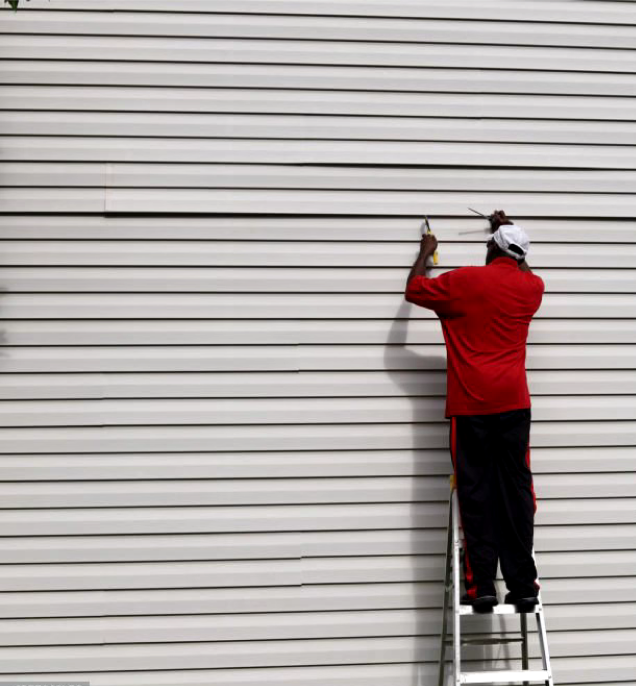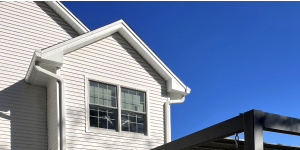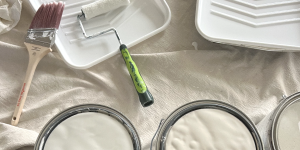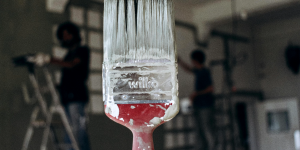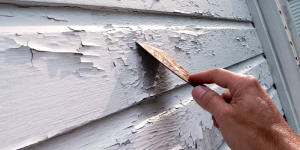Best Options Exterior Paint for Vinyl Siding
Vinyl siding develops when uncovered to heat making it challenging, but possible, to use a thicker exterior covering. When selecting a color it is more useful to give priority to lighter shades. Employing darker colors may cause the vinyl to warp when uncovered to sunlight. We have a vast preference for colors that work nicely or our exterior vinyl painters can compare colors that can be employed. Just because vinyl requires certain paint shades doesn’t mean your options are limited.
When we begin operating our exterior vinyl siding paint we enjoy making sure it is applied accurately and will avoid causing you problems down the road. Before painting exterior vinyl siding our preparation eliminates damage and cleans the surface needed for the coating to adhere. Once the final coat is applied we will check our work and make adjustments where required.
How Professionals Prep and Paint Vinyl Siding
Vinyl siding is one of the popular materials for facade finishing at present. The material is not expensive, reliable, easy to install and aesthetically pleasing. Like any façade covering a time for siding to update its appearance comes.
There is only one way out to update the siding facade — painting. However due to the fact that vinyl siding has a significant coefficient of expansion/contraction the painting result often needs to be more durable.
It is possible to paint siding efficiently and reliably! To obtain a long-lasting result it is essential to choose the right paint and carefully prepare the surface before painting.
The main stages of our vinyl siding painting company:
Wait for good weather
It is advisable to paint vinyl siding at above-zero temperatures — a wide operating temperature range. The paint can be applied at temperatures from +5 to +35 degrees. The properties of the painted surface are maintained in the temperature range from -50 to +60 degrees.
Choose the right paint
For vinyl, it is advisable to use the following substances:
- acrylic street paint
- latex
- automotive enamel, which is also suitable for plastic
- urethane-acrylic
- specialized
Pick the right color
For the siding to heat up less and be less susceptible to expansion manufacturers prefer to produce vinyl siding mainly in light colors. It should be noted that it is recommended to paint the material in a natural or lighter color. Dark surfaces are more heat-resistant, so dark paint on the siding will also not adhere.
Clean and prep the siding
The paint is applied to a clean, dry, grease-free base. Before starting work the facade is washed using household detergents or specialized solutions for cleaning siding. When painting new panels they need to be treated with a solvent since an oil film is applied to the surface of the lamellas which serves as additional protection from external influences. After a few years of use the film disappears.
Scrape off loose paint
After the siding has completely dried (at least four days) be sure to carefully inspect it from all sides to ensure that there is no old paint left on it and if there is our specialists will clean it where necessary.
Make any repairs
Having inspected the siding in advance our team will repair or replace the siding if there is any damage.
Drop & mask
Before the painting begins painters must lay out rags and mask off anything you don’t want paint on. Objects to be camouflaged include windows, doors, lighting fixtures, meters and even cable antennas. They then lay down the protective fabric to protect the areas directly below the painting area, such as decks, driveways, sidewalks and hedges. Painters will move the protective cloth to ensure everything is adequately protected.
Paint
The cleaned surface of vinyl siding and other polymer — coated panels does not need to be primed before applying paint. The company uses convenient tools for painting: brush, roller and spray gun. If painting is done with hand tools the panels are painted horizontally. First hard-to-reach areas in corners and junctions are painted. Mix siding paint thoroughly before use. The primary tool for painting is a wide brush, preferably the width of the siding panel. Carefully inspect the surface for gaps and poorly painted areas at the end of the painting. Detected defects are eliminated.
Clean up
After the paint has dried our specialists remove the tape and rags and clean the area where the work was carried out.
Maintenance
To extend the life of your newly painted siding wash it frequently and remove any traces of dirt and mildew. And then your siding will be bright and beautiful for a long time.

Why Choose Professional Painters from Kozel LLC
Kozel LLC specializes in providing services for painting sidings and facades. By trusting our company to carry out painting and repairs the customer receives a highly responsible and honest approach to completing the assigned tasks.
The professionalism of our vinyl siding painters near me is pleasantly combined with reasonable prices for their services. In addition we are attentive to customer needs and take an individual approach to each order. Our company ensures that siding painting is an affordable, prompt and safe service for customers.
FAQ
Only the following compounds can be used for vinyl siding: 100% acrylic outdoor paints. Urethane-acrylic paints. Latex paints.
Painting your siding darker can cause warping because darker shades of paint naturally absorb more heat from the sun than lighter shades, causing the siding to become hot and warping. Accordingly, it is better to use light shades.
We are painting:
- All types of siding
- Brick
- Facade and garage doors
- Window
- And much more
